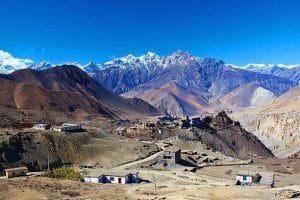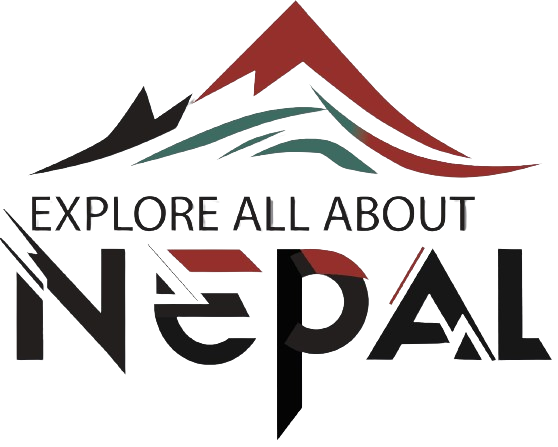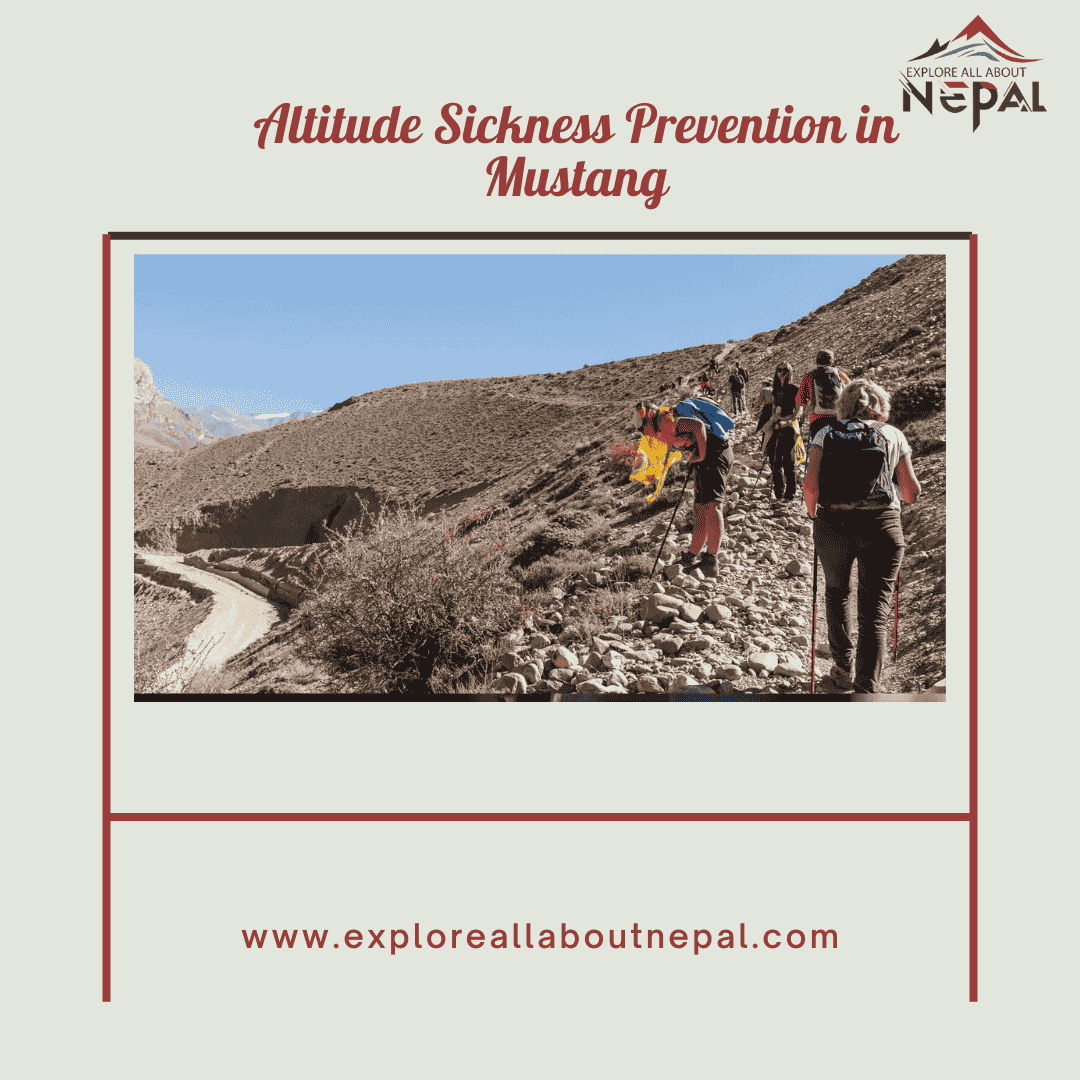Altitude Sickness Prevention in Mustang refers to the measures and precautions taken by trekkers to avoid the harmful effects of altitude sickness while traveling through the Mustang region of Nepal. Mustang, being a high-altitude area with elevations ranging from 3,000 meters (9,842 feet) to over 6,000 meters (19,685 feet), poses a significant risk for tourists who ascend too quickly without proper acclimatization.
Nepal is home to some of the world’s most iconic trekking destinations, including the scenic Mustang region. However, over the past year, Mustang has seen a tragic rise in deaths among tourists due to altitude sickness. Eleven lives have been lost, including nine foreign backpackers and two Nepali trekkers. This blog aims to explore the circumstances surrounding these deaths, highlight the risks of altitude sickness, and provide essential tips for those planning to visit this stunning, high-altitude destination.

Understanding Altitude Sickness
What is Altitude Sickness?
Altitude sickness, also known as acute mountain sickness (AMS), occurs when the body struggles to adapt to high altitudes with lower oxygen levels. Symptoms include headache, dizziness, nausea, fatigue, and in severe cases, swelling of the brain (cerebral edema) or lungs (pulmonary edema), which can be fatal if not treated promptly.
Why is Mustang Prone to Altitude Sickness?
Mustang, located in the Himalayan range, reaches elevations of over 3,000 meters (9,842 feet) at its lowest point and peaks at 6,000 meters (19,685 feet). For trekkers ascending rapidly without adequate acclimatization, the risk of altitude sickness increases significantly. The district’s unique geography, with steep ascents and thin air, puts tourists at high risk, especially those unprepared for the rapid altitude change.
The Tragic Deaths in Mustang: A Detailed Report
Year of Tragedy: 2024-2025
Between April 2024 and March 2025, eleven tourists lost their lives in Mustang, all believed to be victims of altitude sickness. This tragic series of events has raised serious concerns about safety measures in the region. Among the victims, nine were foreign backpackers, and two were Nepali citizens. The deaths have sparked widespread discussions among travel authorities, local communities, and trekking agencies about the need for better awareness and preparedness.
Key Events and Discovery of Bodies
Discovery of Bodies: The bodies of the deceased were found across various trekking routes in Mustang, such as in Gharapzhong-2, Marpha, and near Loghekar on the Damodar Kunda route. Authorities responded promptly to recover the bodies, but it was clear that the tourists had been struggling with altitude sickness and were unable to get proper medical attention in time.
Specific Incidents: On January 23, 2025, two Indian tourists were found dead in the Mustang region. One body was discovered in the Gharapzhong area, and the other near Loghekar. The authorities confirmed that the causes of death were linked to altitude sickness, though further investigations into other possible contributing factors, such as improper preparation or delayed medical assistance, were ongoing.
Other Similar Cases: Other incidents also pointed to a rising concern. In particular, the overwhelming majority of deaths involved tourists who ascended too quickly without giving their bodies enough time to acclimatize to the high altitude.
The Causes Behind the Rising Deaths
Lack of Acclimatization
The primary cause of altitude sickness is the failure to acclimatize properly. As trekkers ascend too quickly, the body doesn’t have enough time to adjust to the decreasing oxygen levels. This is especially risky in regions like Mustang, where trekkers often attempt to cover large distances in a short time.
Unpreparedness of Tourists
Many trekkers underestimate the difficulty of trekking at high altitudes, leading to insufficient preparation. Some trekkers also ignore early symptoms of altitude sickness, which can be dangerous if left unchecked.
Inadequate Medical Facilities
Medical facilities in Mustang are limited due to its remote location. Many tourists are unaware that immediate medical evacuation may not be feasible, and proper medical treatment is not readily available in all areas.
Changes in Trekking Routes
Over the years, trekking routes in Mustang have become more accessible, attracting more trekkers. However, rapid growth in tourism has meant that safety guidelines, infrastructure, and awareness campaigns have not kept pace.
Altitude Sickness Prevention in Mustang : What Trekkers Need to Know
1. Gradual Ascend for Acclimatization
The most critical measure to prevent altitude sickness is a gradual ascent. Trekkers should avoid increasing their elevation by more than 300 meters (1,000 feet) per day. Ensure to stay at a higher altitude for at least a day or two before ascending further.
2. Listen to Your Body
It is essential for trekkers to be aware of the early symptoms of altitude sickness, such as headaches, nausea, dizziness, and loss of appetite. Any of these symptoms should prompt trekkers to descend to a lower altitude and seek medical attention.
3. Hydrate and Eat Well
Keeping hydrated is key at high altitudes. Dehydration exacerbates the symptoms of altitude sickness. A balanced diet is also essential to help the body adjust to high altitudes.
4. Avoid Alcohol and Smoking
Alcohol and smoking can worsen the symptoms of altitude sickness by affecting oxygen levels in the body. Trekkers should avoid these substances while at high altitudes.
5. Seek Medical Attention Early
If symptoms worsen, immediate medical intervention is critical. Trekkers should always carry a basic medical kit, including medications for altitude sickness, and know how to contact medical evacuation services if needed.
Tourism and Safety in Mustang: A Growing Concern
With the increasing number of trekkers visiting Mustang, the local tourism industry faces challenges regarding safety and preparedness. While the beauty of Mustang continues to attract travelers, authorities, trekking agencies, and local communities must prioritize education and infrastructure development to ensure tourists are properly prepared.
1. Raising Awareness
Government officials, trekking agencies, and local communities must work together to raise awareness about the risks of altitude sickness and the importance of gradual ascents and proper preparation.
2. Improved Infrastructure and Medical Support
There is an urgent need for better medical infrastructure in Mustang. Local hospitals and clinics should be equipped to deal with altitude sickness and other emergency medical issues. Additionally, improving communication systems and emergency evacuation options is essential for tourists’ safety.
Conclusion: The Need for Responsible Travel in High Altitudes
The tragic deaths of eleven tourists in Mustang due to altitude sickness are a wake-up call for all trekkers planning to visit high-altitude regions in Nepal. Travelers must be educated on the dangers of altitude sickness and the necessary precautions to ensure their safety. Trekking agencies, local communities, and the government must continue to work together to create a safer and more responsible tourism environment in Mustang.
For tourists visiting Mustang, ensuring proper acclimatization, understanding the risks, and staying prepared can make the difference between a safe adventure and a tragic outcome. While Mustang remains a stunning trekking destination, it’s vital to approach it with respect, caution, and awareness of its high-altitude dangers.
FAQs
1. What are the symptoms of altitude sickness?
The early symptoms of altitude sickness include headache, dizziness, fatigue, nausea, and shortness of breath. If left untreated, it can lead to serious conditions like pulmonary or cerebral edema.
2. How can I prevent altitude sickness while trekking in Mustang?
To prevent altitude sickness, acclimatize gradually, drink plenty of water, avoid alcohol and smoking, and listen to your body. If you experience symptoms, descend immediately and seek medical attention.
3. How high is Mustang?
Mustang is a high-altitude region, with elevations ranging from 3,000 meters (9,842 feet) to over 6,000 meters (19,685 feet) in some areas.
Are you planning to trek in Mustang? Ensure you are prepared by following these safety tips and precautions. Share this article with fellow trekkers to spread awareness and help make high-altitude trekking safer for everyone. For more trekking tips and guides on Nepal’s top destinations, subscribe to our blog.


